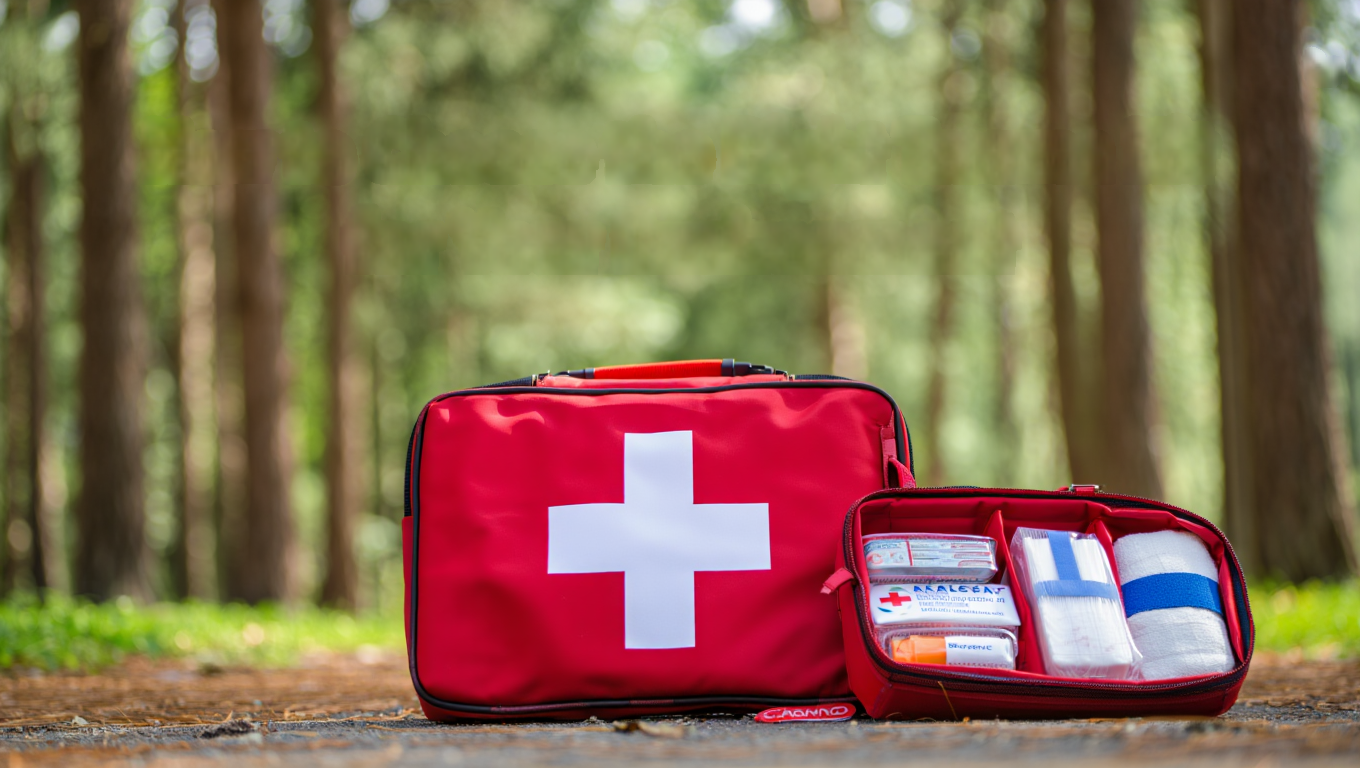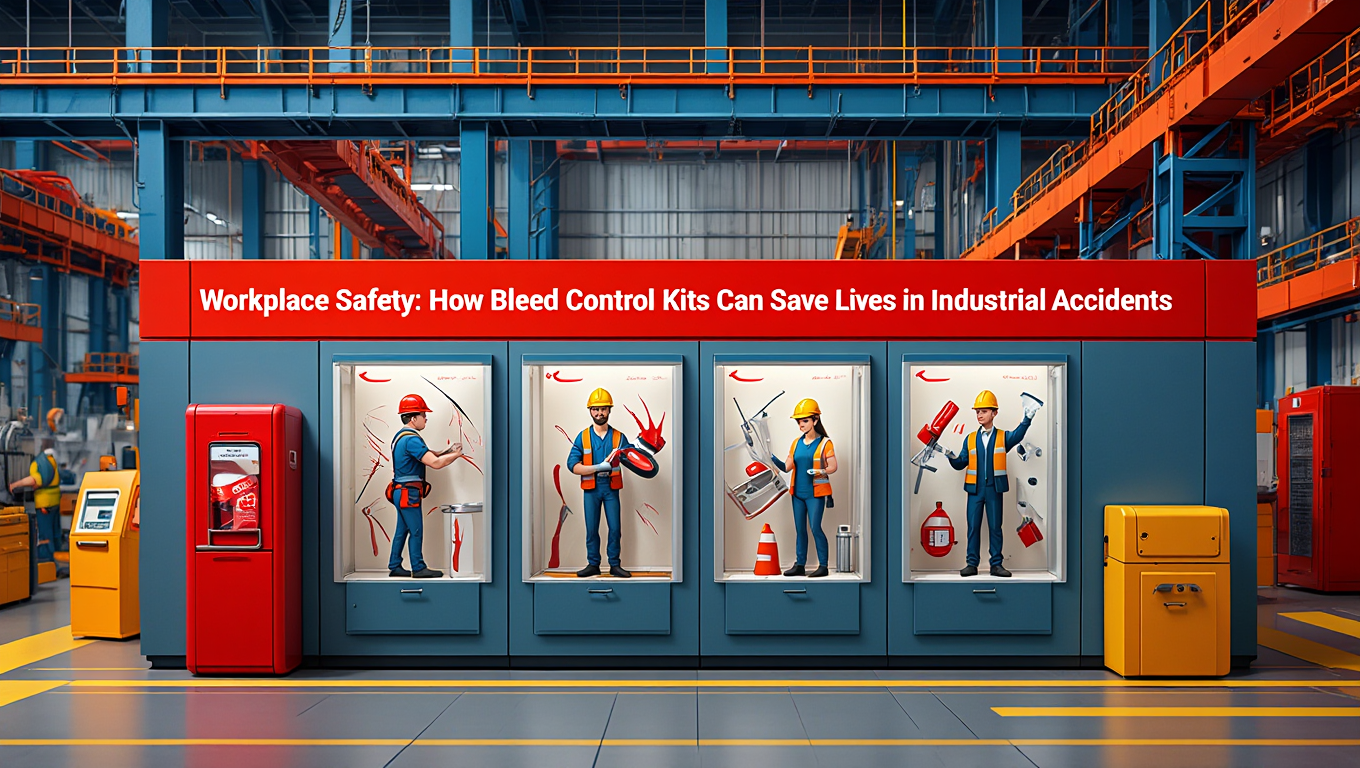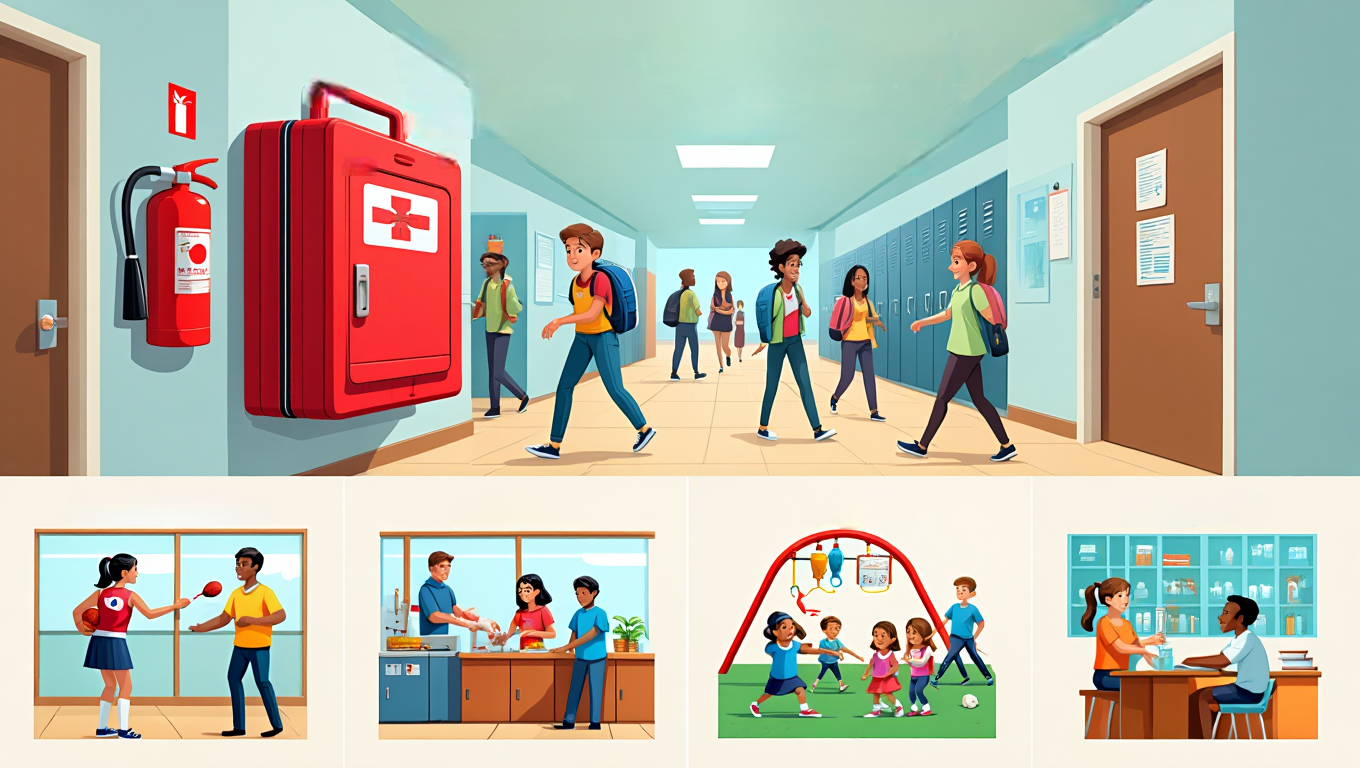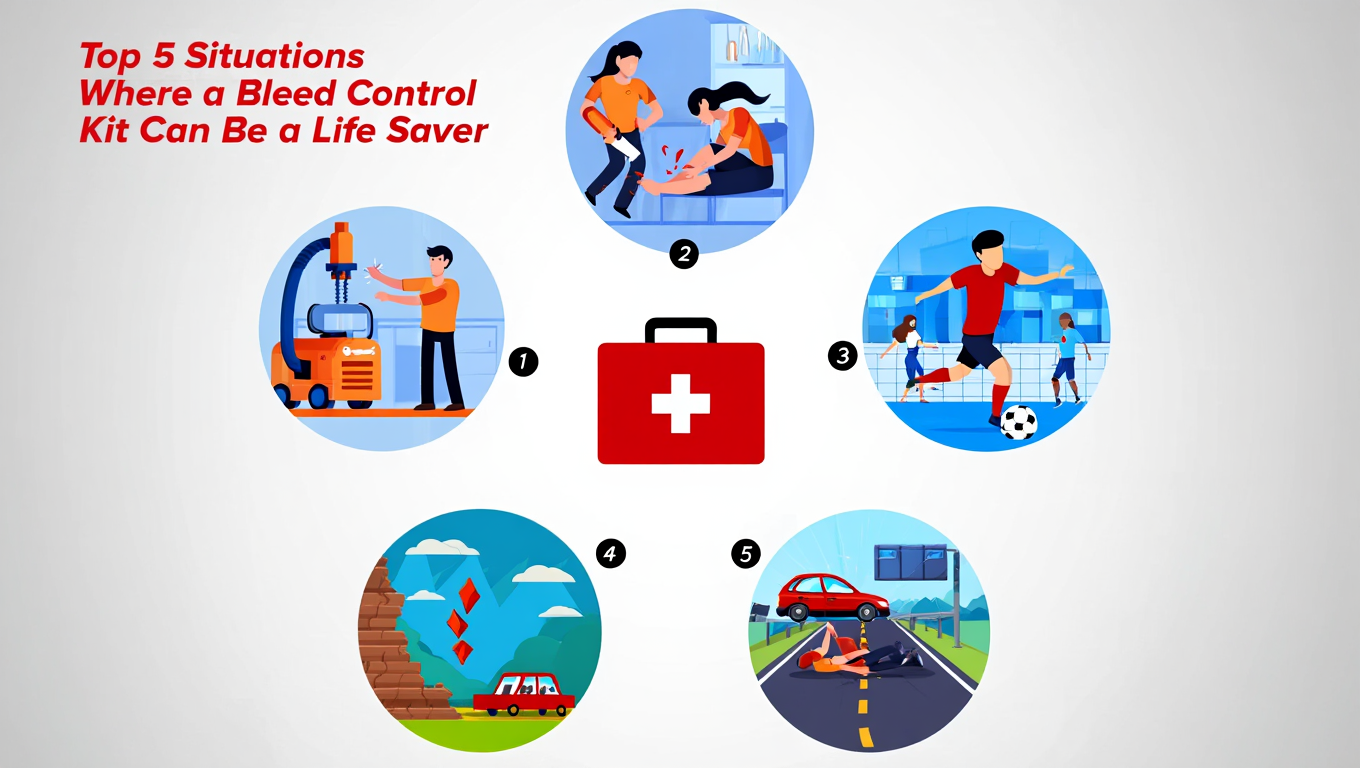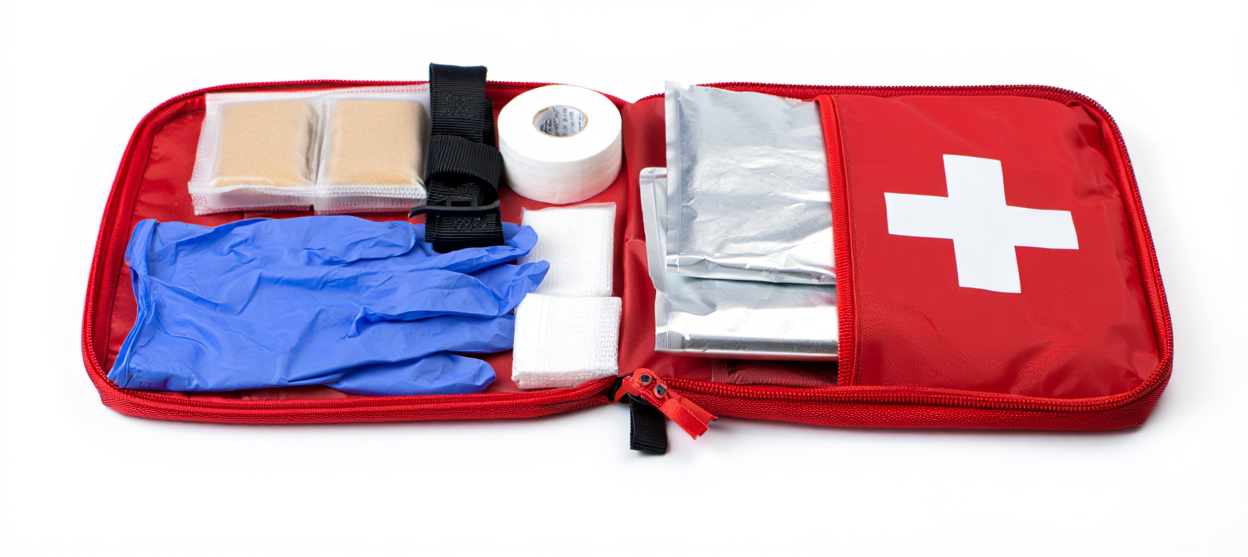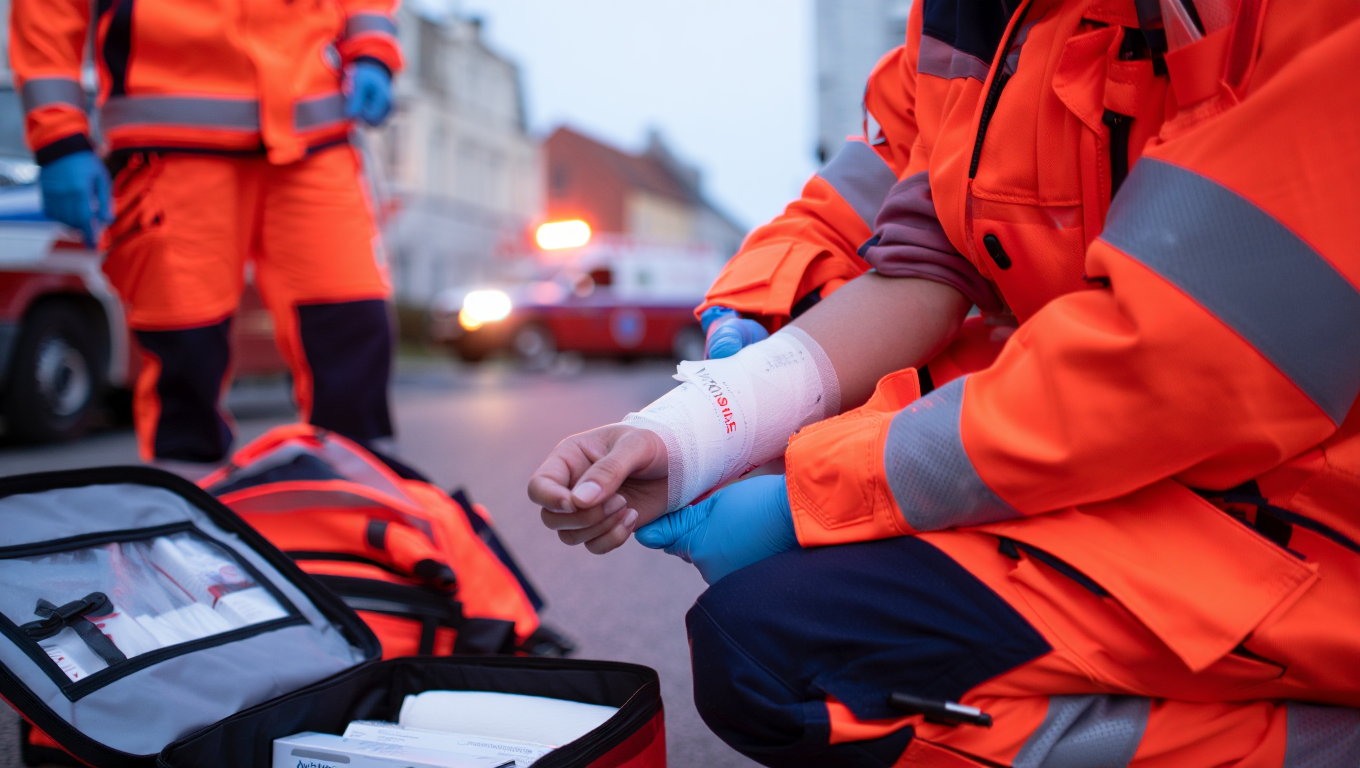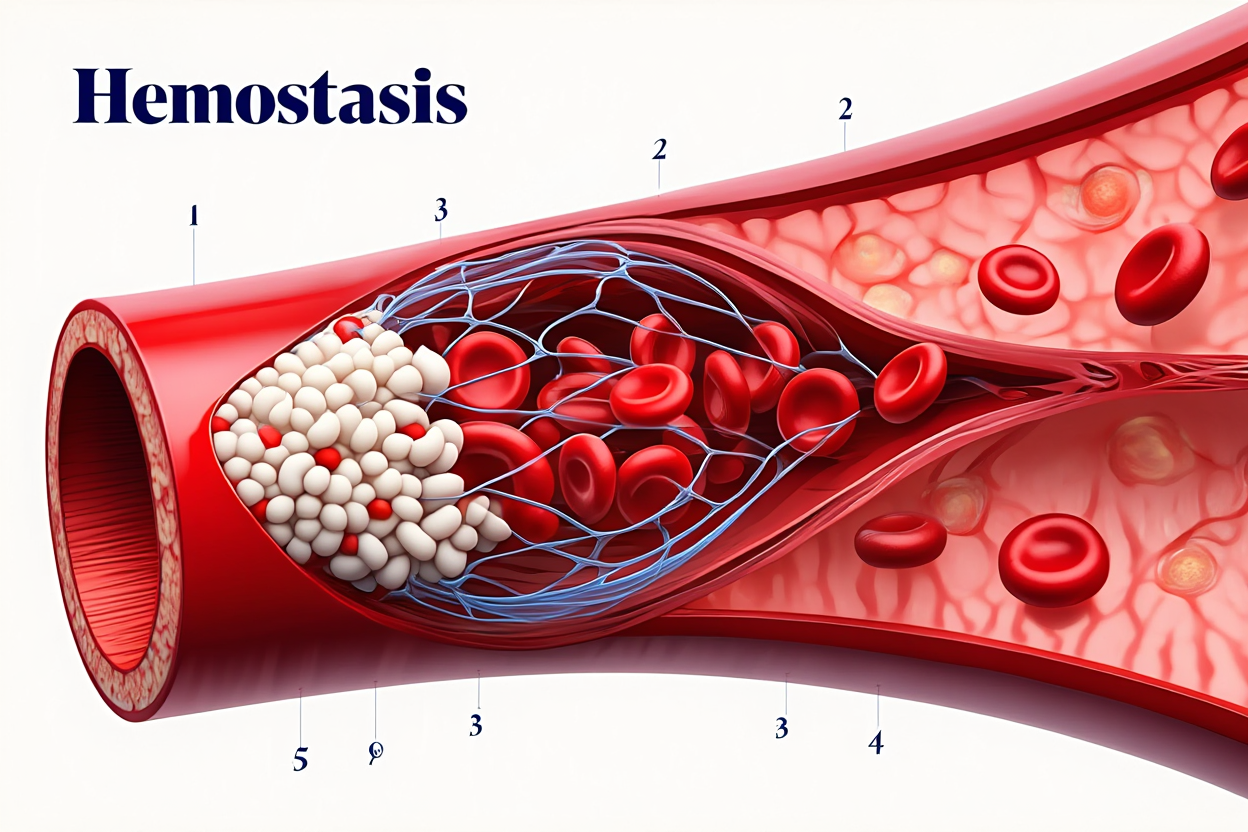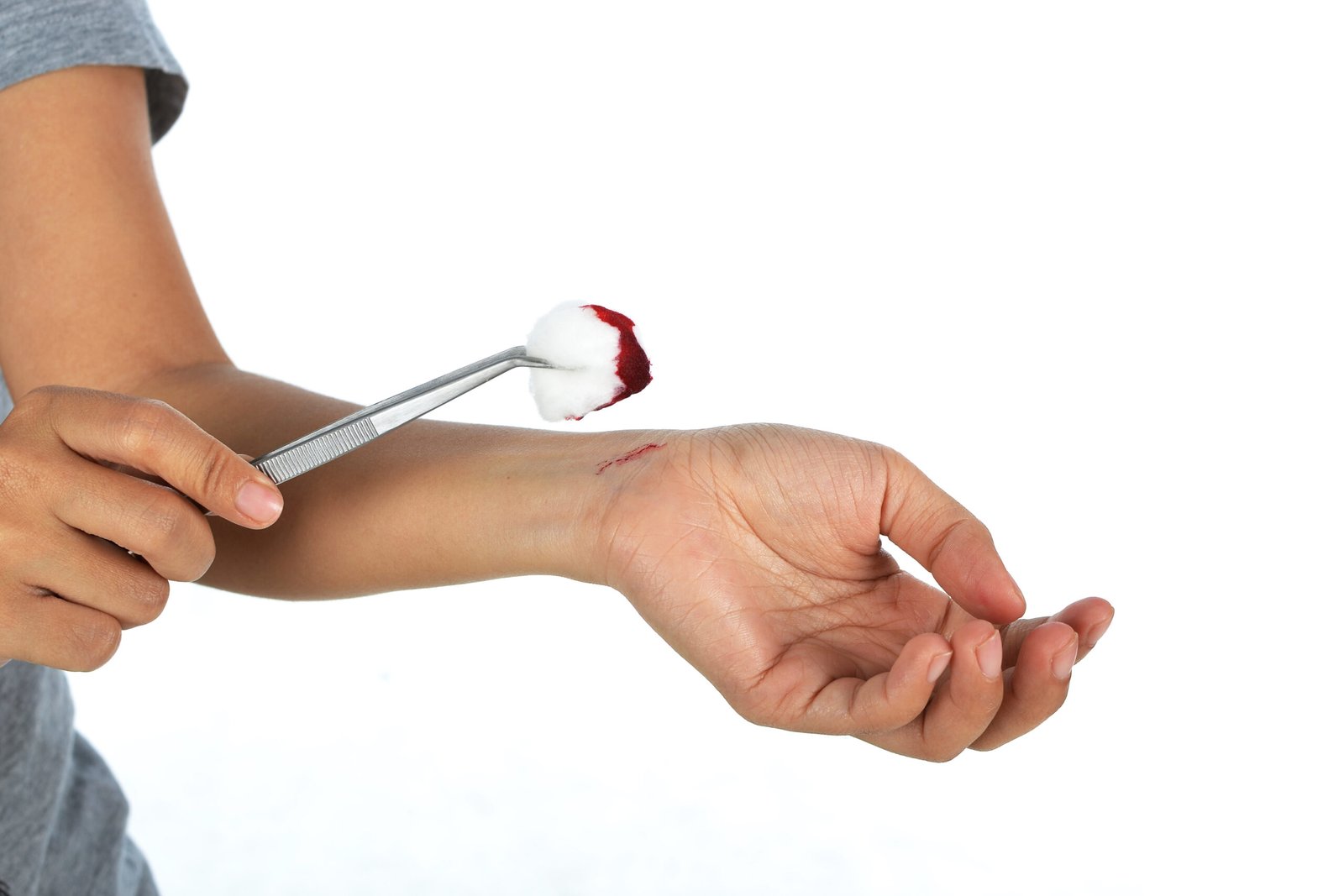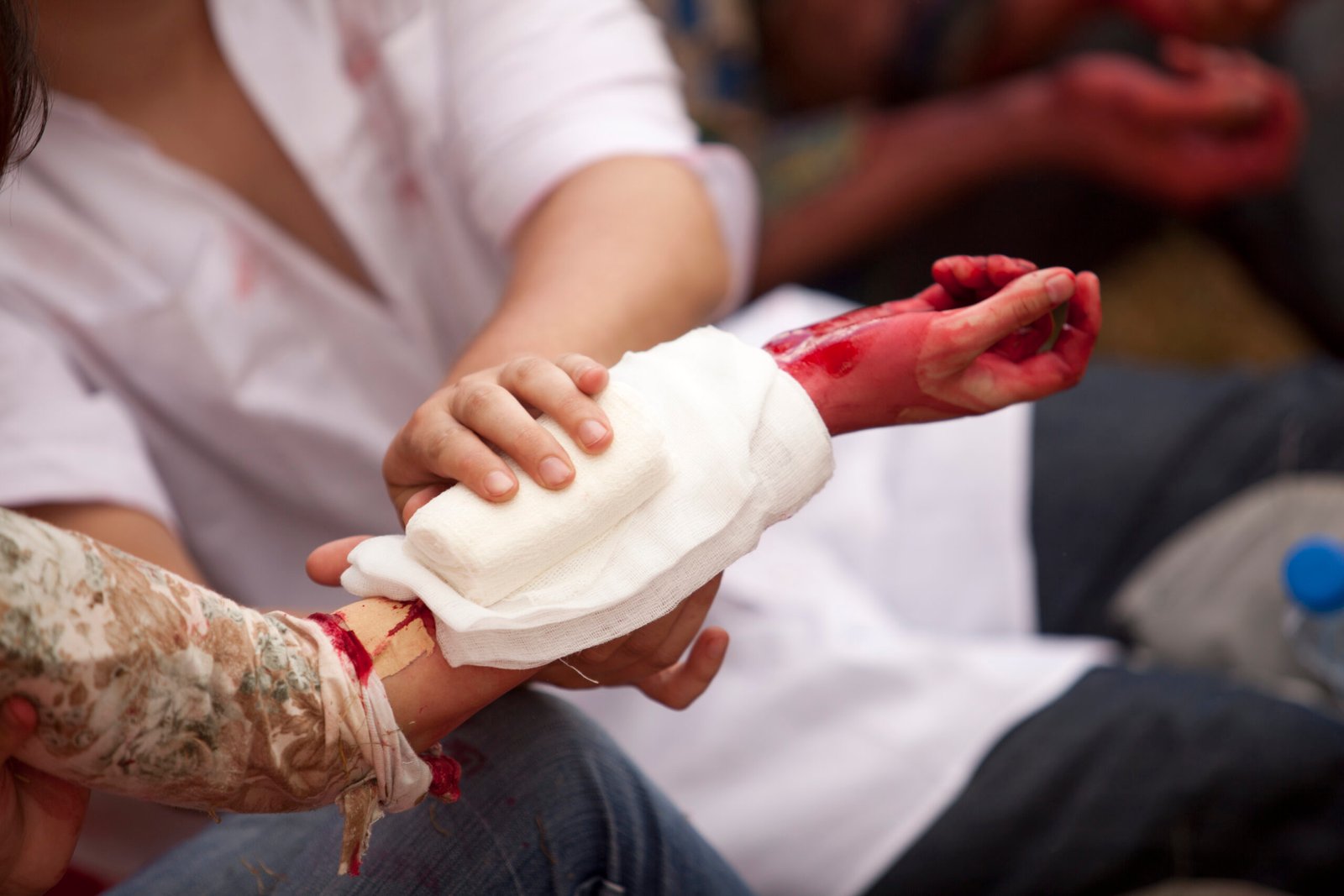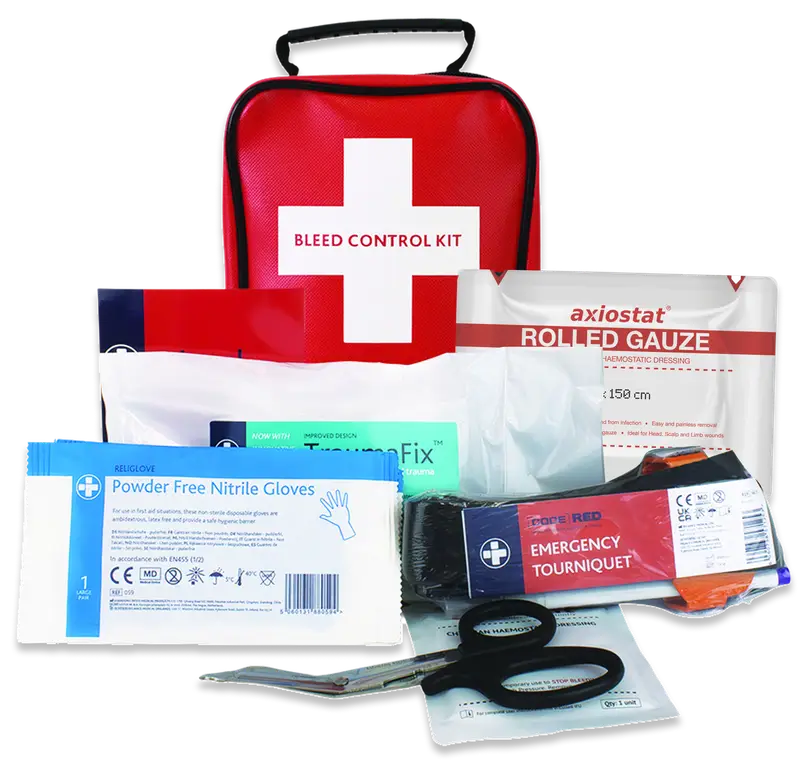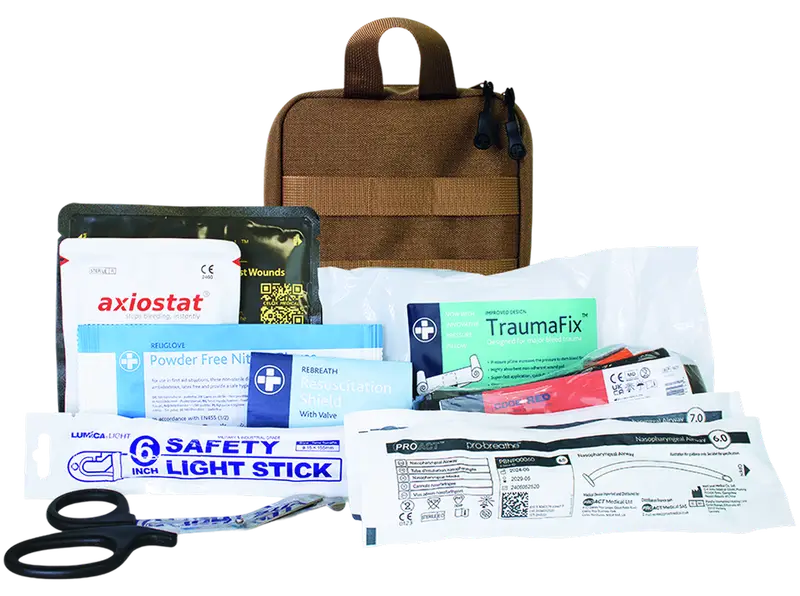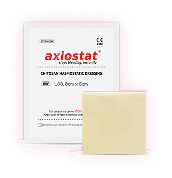How to Choose the Right Trauma Kit for Your Environment
How to Choose the Right Trauma Kit for Your Environment Emergencies can happen at home, at work, or outdoors. Having the right tools on hand can save lives—so choosing the best trauma kit for your environment is crucial. This guide will help you understand the types of trauma kits, their key components, and how to pick the right one for your needs. Why Trauma Kits Are Essential Unlike basic first-aid kits, trauma kits are built to handle life‑threatening injuries—severe bleeding, airway obstructions, penetrating wounds, burns, and fractures. These injuries can cause death or permanent disability if not treated immediately. A proper trauma kit lets you respond quickly, deliver critical care, and save lives, especially in high‑risk settings. What Makes a Trauma Kit Different from a First‑Aid Kit? Axiostat is a chitosan-based hemostatic dressing trusted by trauma care teams around the world. Chitosan is a natural substance made from shellfish and has a positive charge. When you apply Axiostat to a bleeding wound, it attracts red blood cells and platelets, which are negatively charged. This helps form a strong clot faster and stops the bleeding First‑aid kits address minor injuries: small cuts, bruises, insect stings, and minor burns. Trauma kits are designed for serious, potentially fatal injuries that require rapid intervention. A comprehensive trauma kit usually includes: Hemostatic gauze for controlling severe bleeding Tourniquet for arterial bleeding in limbs Trauma dressings Chest seals for penetrating chest wounds Airway management tools Splints for fractures Gloves and trauma shears How to Choose the Best Trauma Kit for Your Environment 1. Assess Your Environment’s Risk Level High‑Risk Environments (construction sites, industrial plants, warehouses, remote outdoor areas, military or tactical operations, schools, public‑event venues) Multiple tourniquets Advanced hemostatic gauze (e.g., Axiostat Hemostatic Gauze) Trauma dressings and chest seals Splints and airway‑management tools Moderate‑Risk Environments (offices, retail shops, small businesses, homes) Single tourniquet Hemostatic gauze Trauma dressings Optional airway‑management tools Remote Environments (camping, hunting, wilderness expeditions) Compact, lightweight supplies Portable gear designed for longer‑duration wound management 2. Prioritize Life‑Saving Components Ensure your kit includes: Hemostatic Gauze (e.g., Axiostat) to stop bleeding quickly—even in patients on blood thinners Tourniquet designed for rapid application under stress Chest Seals to prevent air entry into chest‑wound cavities Trauma Dressings to apply pressure and protect wounds Airway‑Management Tools (nasopharyngeal airways, etc.) Trauma Shears & Gloves for safe access and protection 3. Match Portability to Your Needs Vehicle Kit: Compact to medium, fits under a seat or in the glove box Home Kit: Medium, stored centrally and accessibly Workplace Kit: Multiple kits positioned throughout the facility Outdoor Kit: Lightweight, waterproof, backpack‑ready Tip: Choose a kit you’re willing to keep with you. Avoid bulky or hard‑to‑carry options. 4. Verify Quality and Compliance Look for certified, medical‑grade components. Choose trusted brands used by professionals and the military (e.g., Axiostat). Confirm compliance with local or national safety regulations. Inspect your kit every 3–6 months: check expiration dates and replace expired or missing items. Why Axiostat Hemostatic Gauze Should Be in Every Trauma Kit Axiostat Chitosan Hemostatic Gauze is globally trusted for its: Proven effectiveness at quickly stopping severe bleeding Ability to work even on patients with impaired clotting Easy application—ideal for non‑medical users Battle‑tested performance in military and civilian settings Including Axiostat can mean the difference between life and death in critical emergencies. Final Thoughts Choosing the best trauma kit is simple when you: Understand the risks in your environment Select essential life‑saving components Ensure portability and ease of use Rely on trusted products like Axiostat Hemostatic Gauze Emergencies are unpredictable. Being prepared with the best trauma kit ensures you can act fast and save lives. Check your readiness today and equip yourself or your team with the right kit. Frequently Asked Questions (FAQ) What is the best trauma kit? One that includes Axiostat Hemostatic Gauze, tourniquets, trauma dressings, chest seals, airway tools, gloves, and trauma shears—and matches your environment’s risk level. Should I have a trauma kit at home? Yes. Serious injuries can occur anytime, and a trauma kit helps manage them before EMS arrives. How do I choose the best trauma kit for the workplace? Assess workplace hazards and select a kit with supplies suited to those risks—more advanced for higher‑risk industries. Why is Axiostat Hemostatic Gauze recommended? It stops bleeding fast, works on patients with clotting issues, and is trusted worldwide. How often should I check my trauma kit? Every 3–6 months. Replace expired items and restock any missing tools. Related Insights All Posts Blog How to Choose the Right Trauma Kit for… Workplace Safety: How Bleed Control Kits Can Save… Why Every School Should Have a Bleed Control… Get in touch today! We are happy to provide you with assistance and support regarding any inquiries or questions you may have. [email protected] (+91) 88607 86067 Axio Biosolutions Private Limited, Ahmedabad, Gujarat, India

